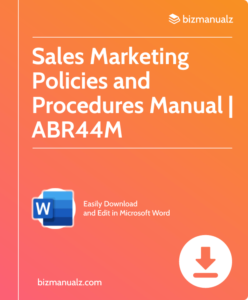What Are Good Examples of Sales Metrics?

Sales is powered by numbers. Knowing the right metrics can be the secret to success. Here, good sales metrics examples help businesses analyze their performance and make the right decisions are discussed. What are good examples of sales metrics?
Good Sales Metrics Examples
Revenue is an essential metric. It reveals the total income made from sales in a certain period. Tracking revenue allows businesses to see their financial health and customer spending trends. Also, comparing revenue across different times can uncover insights into the effectiveness of sales strategies or the influence of outside factors on sales.
Customer acquisition cost (CAC) is another important metric. It shows how much is spent on getting new customers. Monitoring CAC lets companies optimize strategies to reduce acquisition cost and increase profits.
Sales conversion rate is a crucial metric too. It measures the percentage of prospects that become paying customers. A high rate indicates a successful sales process. A low rate signals areas for improvement. Analyzing this metric helps businesses find problems in their sales funnel and boost conversion rates.
It is important to track specific KPIs (key performance indicators) suitable for the industry or business model. For instance, an e-commerce company may focus on metrics like average order value (AOV) or customer lifetime value (CLV).
A software-as-a-Service (SaaS) firm may measure metrics such as monthly recurring revenue (MRR) or churn rate. These industry-specific metrics offer more details of business performance and allow for more accurate optimizations.
As an aspiring sales pro or business owner, it is vital to be aware of sales metrics. Knowing how revenue, CAC, conversion rates, and industry-specific KPIs impact your business will let you make decisions based on data. Tracking these metrics regularly will let you identify areas for improvement, optimize sales strategies, and get greater success.
Take advantage of sales metrics and unleash their potential. Don’t miss out on insights that could improve sales. Start tracking these metrics now and unlock possibilities for growth and success in the competitive world of sales.
The Importance of Sales Metrics
Sales metrics are essential for businesses aiming for growth and better performance. Examining key sales data provides invaluable insight into sales processes and spots for improvement. Metrics display how the sales team is doing and can be used as a guide for making decisions and goalsetting.
- Checking sales metrics helps businesses evaluate their sales strategies and spot areas needing improvement.
- By monitoring metrics such as customer acquisition cost, businesses can figure out how much they are spending to acquire each new customer and make educated decisions about marketing spend.
- Sales metrics also offer valuable understanding of customer behavior and preferences, assisting businesses to adjust their sales approach and raise customer satisfaction.
- Using sales metrics well aligns the efforts of the sales team with the total business goals, ensuring everyone is striving for the same objectives.
- Regularly studying and analyzing sales metrics can recognize patterns or trends that may suggest potential complications or advantages, enabling businesses to take proactive action.
On top of these points, it is crucial to be aware that understanding individual sales metrics in context is equally important. While certain metrics may independently feature strengths or weaknesses, it is essential to examine them together to gain an overall understanding of performance.
To make the most of these metrics, businesses should think about using a few tips:
- Set specific targets: Define precise goals for each metric that match the whole business strategy. This will make sure the team concentrates on achieving meaningful outcomes.
- Invest in technology: Make use of CRM software or other tools which help track, analysis, and reporting of different sales metrics. This enables real-time visibility into performance and aids data-driven decision-making.
- Regularly communicate findings: Spread insights from sales metrics with applicable stakeholders across the organization. This supports collaboration and allows for the recognition of possible solutions or improvements.
- Offer ongoing training: Give sales teams the necessary knowledge and skills to interpret and utilize sales metrics effectively. This empowers them to take responsibility for their performance and make informed decisions based on data.
By emphasizing sales metrics, businesses can get actionable insights, better decision-making, and growth. Investing in tracking and analyzing these metrics will ultimately lead to a more productive and efficient sales operation.
Key Sales Metrics to Track
Sales metrics are a must for tracking the success of a sales team. By analyzing these metrics, businesses can gain insights into their performance, spot areas for improvement, and make data-driven decisions. Tracking these figures allows organizations to measure their sales effectiveness, evaluate individual and team performance, and optimize their strategies to get desired results.
Here we have a table with some key sales metrics to track:
| Metric | Calculation | Purpose |
|---|---|---|
| Sales Revenue | Total Sales ($) | Measures income generated from sales activities. |
| Conversion Rate | (Number of Conversions / Leads) x 100% | Determines the percentage of leads that result in conversions. |
| Average Deal Size | Sales Revenue / Number of Deals | Finds out the average value of each closed deal. |
| Sales Cycle Time | Average time to close a deal | Assesses duration from lead generation to closed deal. |
| Customer Acquisition Cost (CAC) | Total Sales & Marketing Expenses / Number of New Customers | Calculates the cost incurred in acquiring new customers. |
Apart from these popular metrics, other important indicators are customer churn rate, customer lifetime value (CLTV), win rate, pipeline size, and quota attainment.
By understanding and tracking these metrics, we gain valuable insights into the effectiveness of various aspects of an organization’s sales process. Regularly analyzing these figures helps to identify areas that need improvement or adjustment.
As an example, let us consider IBM’s successful adoption of ‘percent-of-revenue’ as a crucial sales metric during the mid-1990s. IBM realized that closing larger deals was essential for long-term growth and profitability. This strategic shift allowed them to prioritize capturing high-value contracts with significant impact on their bottom line.
Examples of Good Sales Metrics
Sales metrics are essential for understanding the performance and efficiency of a sales team. Knowing which metrics to monitor can help businesses detect areas for improvement and make decisions based on data. Examples of great sales metrics are:
- Conversion Rate: The percentage of leads that become paying customers.
- Average Deal Size: The average value of each sale the sales team makes.
- Sales Growth: The rate at which sales revenue is growing.
- Customer Acquisition Cost: The cost related to obtaining a new customer.
Following these metrics gives useful information into the performance of a team and lets businesses adjust their strategies accordingly. Other aspects, such as customer satisfaction, customer retention rate, and upsell/cross-sell possibilities should also be taken into account. These metrics give a comprehensive overview of the sales performance and show the long-term success of the business.
Tracking tools and technology have changed over time. In the past, companies heavily relied on manual data collection and analysis, which was lengthy and prone to mistakes. Thanks to developments in technology, companies now have access to sophisticated CRM systems that automate data collection and provide real-time insights. This has completely altered the way businesses track their sales metrics and make decisions based on accurate data.
How to Use Sales Metrics Effectively
Sales metrics are a must for monitoring and understanding sales performance. Businesses can gain insights and use data-driven decisions to update their strategies by using metrics correctly. Here is a 3-step guide on how to use them:
- Set objectives: Start by deciding your goals and objectives for using the metrics. Match them with your business goals to make sure the metrics you choose are relevant.
- Pick the right metrics: It is important to select the right metrics for accurate analysis. Think about your industry, target market, and needs when deciding. Examples include conversion rates, average deal size, customer acquisition cost, and customer lifetime value.
- Consistently track and analyze: Once you have chosen the metrics, track and analyze them regularly to monitor performance. Use reporting tools or software to gather real-time data. Review the metrics to identify trends, patterns, or areas that need improvement.
It is important to note that not all metrics are equal. Each one offers unique insights into different aspects of your sales performance. Make sure to understand which ones are most important for your business and industry.
A study by Harvard Business Review showed that companies that use their sales analytics properly outperform their rivals by 10%. This shows the big impact of using the right sales metrics in achieving success today (source: Harvard Business Review).
Examples of Sales Metrics
This article talks about sales metrics that can help businesses measure their sales team’s performance and make data-driven decisions. The conversion rate is an important one. It measures the % of leads that become sales. Businesses can use it to see how effective their lead generation efforts are.
Another metric is the average deal size. This tells businesses the average value of each sale. With this, they can identify customer spending trends and make pricing decisions. Sales velocity is another metric that measures how quickly a deal moves through the pipeline. Seeing where it slows down helps businesses identify and fix the problem.
It’s also important to consider industry-specific metrics. For example, an e-commerce company would look at things like shopping cart abandonment rate or customer lifetime value. XYZ Corporation is an example of the power of sales metrics. When they saw declining sales, they analyzed their metrics and implemented strategies to improve their conversion rate. This led to a 20% increase in revenue!
Frequently Asked Questions
 1. What is a sales metric?
1. What is a sales metric?
A sales metric is a quantifiable measure used to track and assess the performance of sales teams and individuals. It provides insights into various aspects of the sales process and helps in making informed business decisions.
2. What are some examples of sales metrics?
Common examples of sales metrics include revenue generated, number of new customers acquired, customer lifetime value, conversion rates, average deal size, sales growth percentage, and sales cycle length.
3. How can revenue generated be a sales metric?
Revenue generated is a fundamental sales metric that measures the total amount of money generated from sales activities within a specific time period. It helps businesses evaluate their sales performance and track their financial success.
4. Why is customer lifetime value an important sales metric?
Customer lifetime value (CLTV) is a crucial sales metric as it calculates the total predicted revenue a customer is expected to generate throughout their relationship with a company. It helps prioritize customer retention efforts and identify high-value customers.
5. What is the significance of conversion rates as a sales metric?
Conversion rates measure the percentage of potential customers who take a desired action, such as making a purchase or filling out a lead form. Monitoring conversion rates helps sales teams identify bottlenecks in the sales funnel and optimize their strategies accordingly.
6. How can average deal size be used as a sales metric?
Average deal size measures the average value of each sale. It helps sales teams assess the effectiveness of their pricing strategy, identify trends in customer purchasing behavior, and set realistic sales targets.
















Leave a Reply